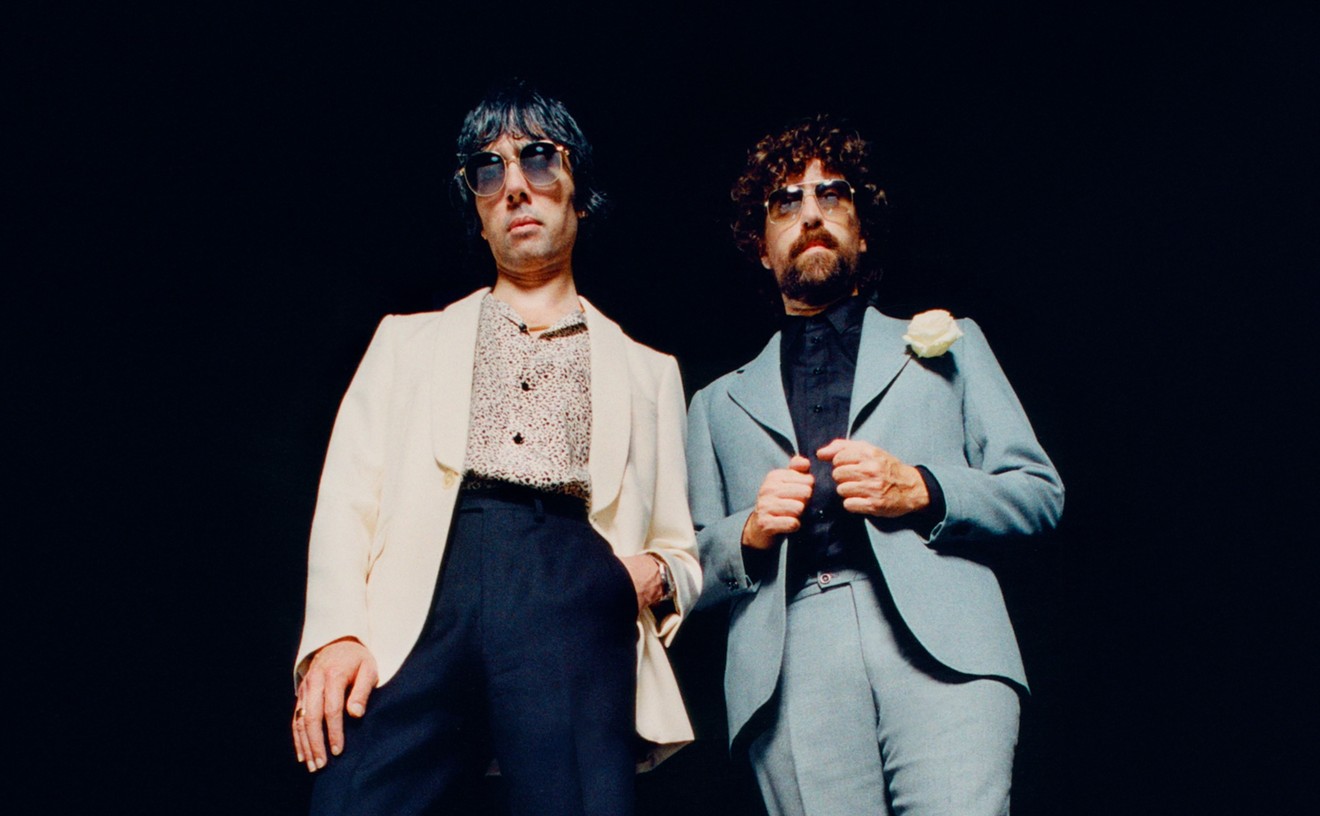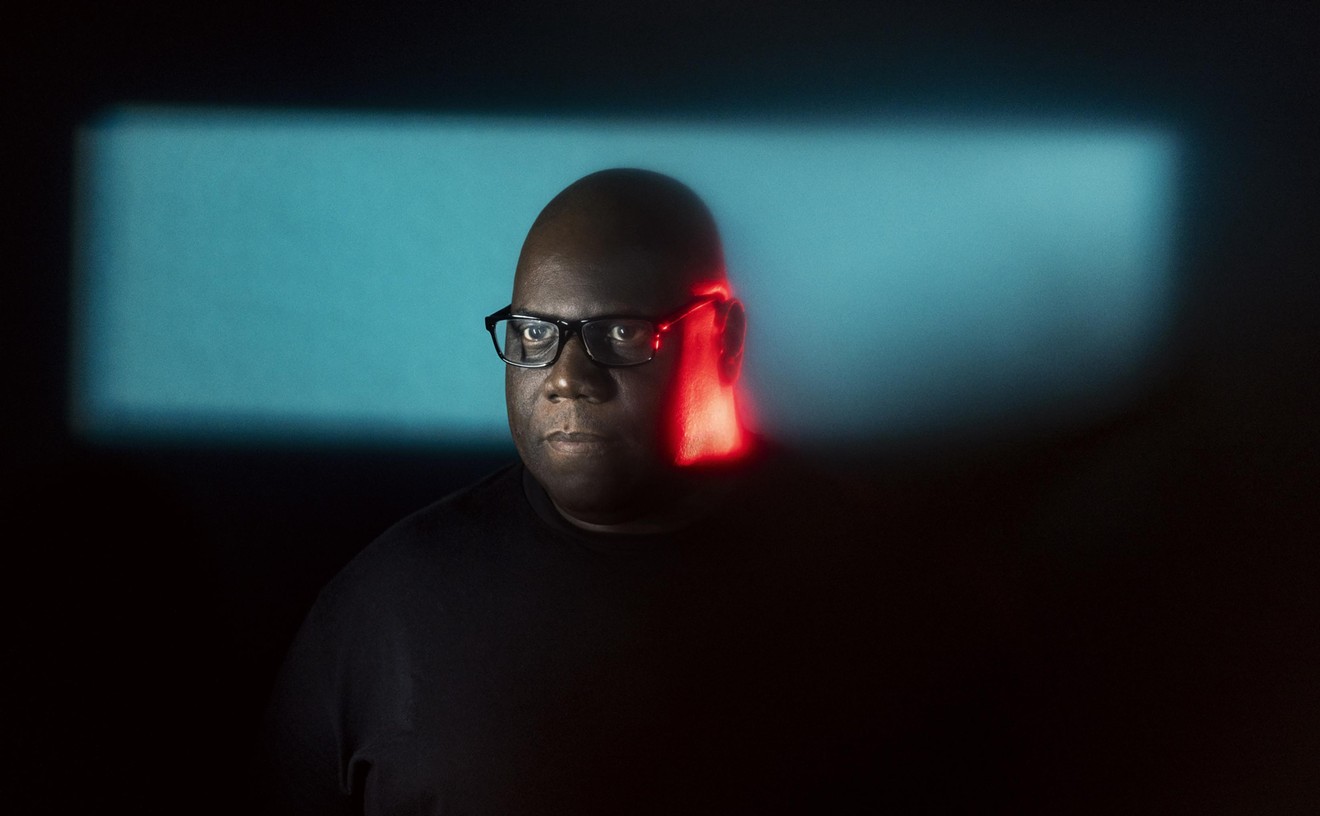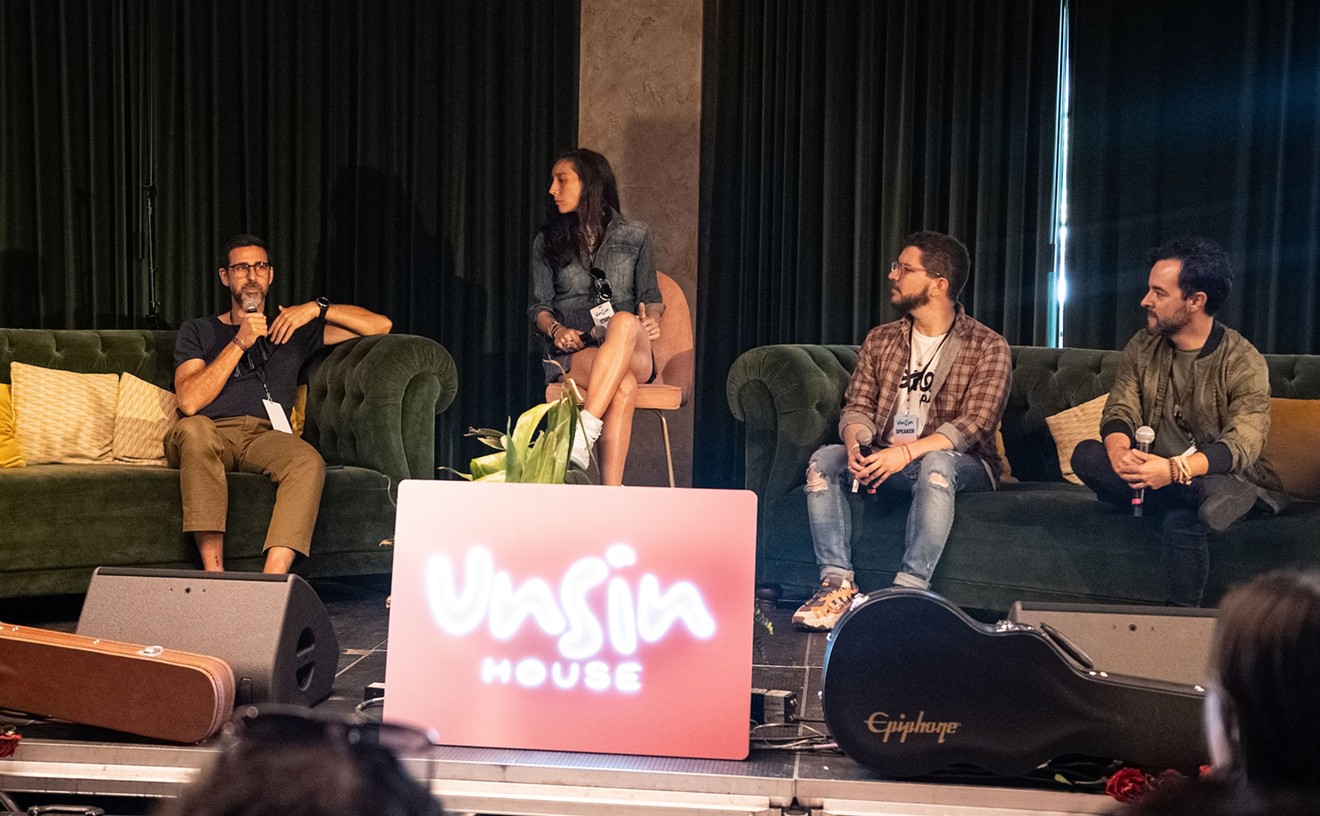Paco de Lucia made his unlikely MTV debut earlier this year in Bryan Adams's video "Have You Ever Really Loved a Woman," the theme song from the movie Don Juan de Marco. Portraying a wistful guitar player seated quietly among lovers in a dusty taberna, de Lucia easily steals the song from Adams during a short solo in which he casually displays his virtuosity with what amounts to some pretty facile strumming -- facile for the man known as the greatest living flamenco guitarist, anyway.
In his cameo appearance, de Lucia dutifully plays the part of a passive accompanist; but when the guitarist performs in concert with his sextet, he is clearly the star attraction. The show typically begins with a lone spotlight on de Lucia -- a trim figure invariably dressed in a white blouse and black pegged pants -- who rests his guitar on his thigh as he plays, rather than holding it close to the body under his right arm in the traditional manner of flamenco guitarists. As an introduction, de Lucia offers a sampler of his prodigious technique and emotional range, his fingers flying through a flurry of flamenco bulerias and rumbas, jazz scales, and classical-sounding arpeggios. One by one, the members of his sextet join him: his brothers, Ram centsn de Algeciras on guitar, and singer Pepe de Lucia; Carlos Benavent on bass and manodola; percussionist Rubem Dantas; dancer Joaquin Mateos, who also plays percussion; and Jorge Pardo on sax and flute.
Since he first performed at Carnegie Hall in 1970, de Lucia has served as an ambassador of flamenco, opening an insular art form to both widespread audiences and outside influences. Through 30 years of touring and recording, he has been responsible for changing the image of flamenco, rescuing it from its status as a narrow ethnic entertainment and endowing it with deserved recognition as a multifaceted, richly layered musical genre.
De Lucia is probably best known in this country for his collaborations with jazz musicians, notably fellow guitarists John McLaughlin and Al Di Meola, with whom he recorded the popular albums Friday Night in San Francisco (1981) and Passion, Grace & Fire (1982). Chick Corea played with de Lucia's sextet on the 1990 album Zyryab.
Jazz and flamenco have obvious connections. Both were nurtured in marginal social environments -- jazz in urban African-American neighborhoods, flamenco in rural gypsy communities -- and both were rooted in the music of ancient cultures. (The exact origin of flamenco is still a matter of dispute among the music's scholars, although it is thought to be a mix of rhythms brought by the Hebrew, Moorish, and gypsy peoples who passed through the southern tip of the Iberian peninsula over several centuries.) De Lucia has found that the real common ground between the two musics is found in improvisation.
"There's a very similar kind of jamming that goes on," explains the Spanish guitarist, speaking over the phone from his home in Madrid. "Because each of the musicians plays what he feels, there's a lot of harmony in the combination."
While maintaining the basic twelve measures and forceful strumming of flamenco rhythm, de Lucia plays with chord structures and harmonies in ways often reminiscent of American jazz or Latin jazz styles. Pepe de Lucia's singing remains faithful to the traditional canto hondo of flamenco (a deep, wailing chant), while the caj centsn, a boxlike instrument that Paco de Lucia took to Spain from South America, is used to experiment with basic percussive rhythms, like the dancer's feet, which often stamp out steps in triple time. Meanwhile the jazz element is highlighted by Pardo's sax and flute solos. Even without the contributions of American musicians heard on some of de Lucia's albums, however, the sound of the sextet is tinged with jazz.
"We play flamenco," de Lucia states emphatically. "The sax and flute sound like jazz because they're usually associated with jazz. But it's flamenco, just flamenco with more instruments. I am a flamenco guitarist. I can play with jazz musicians, but I am still playing flamenco."
Unlike most flamenco musicians, de Lucia is a payo (the gypsy name for non-gypsies), born Francisco Sanchez G centsmez in 1947 in the port city of Algeciras, in Cadiz, the southern Spanish region known as "the cradle of flamenco." (He later adopted his mother's name, Lucia, as his stage name -- Paco is the diminutive of Francisco.) His family lived in a working-class gypsy neighborhood, and his father and brothers already were playing guitar regularly with gypsy musicians in local bars by the time Paco was born. De Lucia knew the rhythms of flamenco before he could speak, and, as legend has it, he was playing guitar by the time he was five. Hoping to bring some extra money into the household, he started performing professionally at age eleven. Three years later, he toured with flamenco dancer Jose Greco's company.
While on tour with the dance company in the United States, de Lucia met the solo guitarist Augustin Castell centsn, known as Sabicas, who, with other musicians in the 1950s, had begun to give the guitar a greater prominence in flamenco music. The existence of solo flamenco guitarists can be traced back to the late 1800s, but until the mid-Twentieth Century the guitar's most important function was as an accompaniment to flamenco singers. According to Spanish flamenco scholar Paco Sevilla, Sabicas contributed "a clean technique, a speed, and a musicality that had previously been unimaginable" on flamenco guitar. It was Sabicas who urged the young de Lucia to write his own compositions and create a personal style.
De Lucia began to explore the music's possibilities, expanding the boundaries of traditional flamenco. In the Sixties, he adapted Mexican, Cuban, and Argentine classics for flamenco guitar, reworking the structures of flamenco bulerias, tangos, and rumbas, and experimenting with harmonies and the tension of the rhythms, while simultaneously remaining faithful to the music's basic form. In the late Sixties, de Lucia met the legendary singer Camar centsn de la Isla (who died at age 40 in 1992). The pair would record a dozen records together. Their early collaborations, combining de Lucia's guitar arrangements and Camar centsn's untraditional lyrics and phrasing, were lauded by supporters of what by the Seventies was known as "new flamenco" -- and severely criticized by flamenco purists.
"Oh, that was a long time ago, they accept me now," de Lucia notes when asked about his bouts with the elders of the flamenco world. Still he seems eager to assert his identity as a flamenco musician (he uttered the phrase "I am a flamenco guitarist" at least a half-dozen times in the course of a fifteen-minute interview). As for his own definition of flamenco, he states that it's all in the duende, the passion that fuels flamenco.
"For me flamenco is a vehicle of expression, with which I can reach a lot of people better than I could through language," explains de Lucia, who is known to be a man of few words and often doesn't speak at all during his concerts. "Flamenco communicates directly through the heart, through the emotions. Flamenco is very original music, it's alive. It's not intellectualized, so it stays alive. It's full of emotions, of rhythms, and it's original. Above all originality is essential in any kind of artistic manifestation."
Since the time de Lucia and others of his generation broke the boundaries of traditional flamenco guitar, younger guitarists have taken the music even further, fusing flamenco with rock, jazz, and various forms of Latin roots music, developments that, not surprisingly, have pleased de Lucia.
"Flamenco has opened up enormously," he says. "It's undergone a real revolution. It was always very static, very purist music. Tradition is always there; the traditional form of expression is maintained. But now there are people who keep thinking, who keep evolving the music, with better or worse results. I think it's always interesting to try something new. I'm always in favor of people who try to find a new path."
Tomorrow night (Friday) the Paco de Lucia Sextet appears at the Jackie Gleason Theatre in Miami Beach, part of a nineteen-city U.S. tour. Bass player Carlos Benavent is recovering from a serious car accident in Spain and will be replaced by Juan Manuel Ca*izares. Apart from that, says de Lucia, ticketholders shouldn't expect any surprises. Just flamenco.
"It's the same concept as always," he shrugs. "I don't pretend to be anything other than a flamenco guitarist. It's what I am, what I've been, and what I always will be."
The Paco de Lucia Sextet performs at 8:00 p.m. on Friday, October 6, at the Jackie Gleason Theatre, 1700 Washington Ave, Miami Beach; 856-0090. Tickets range from $30 to $45.










